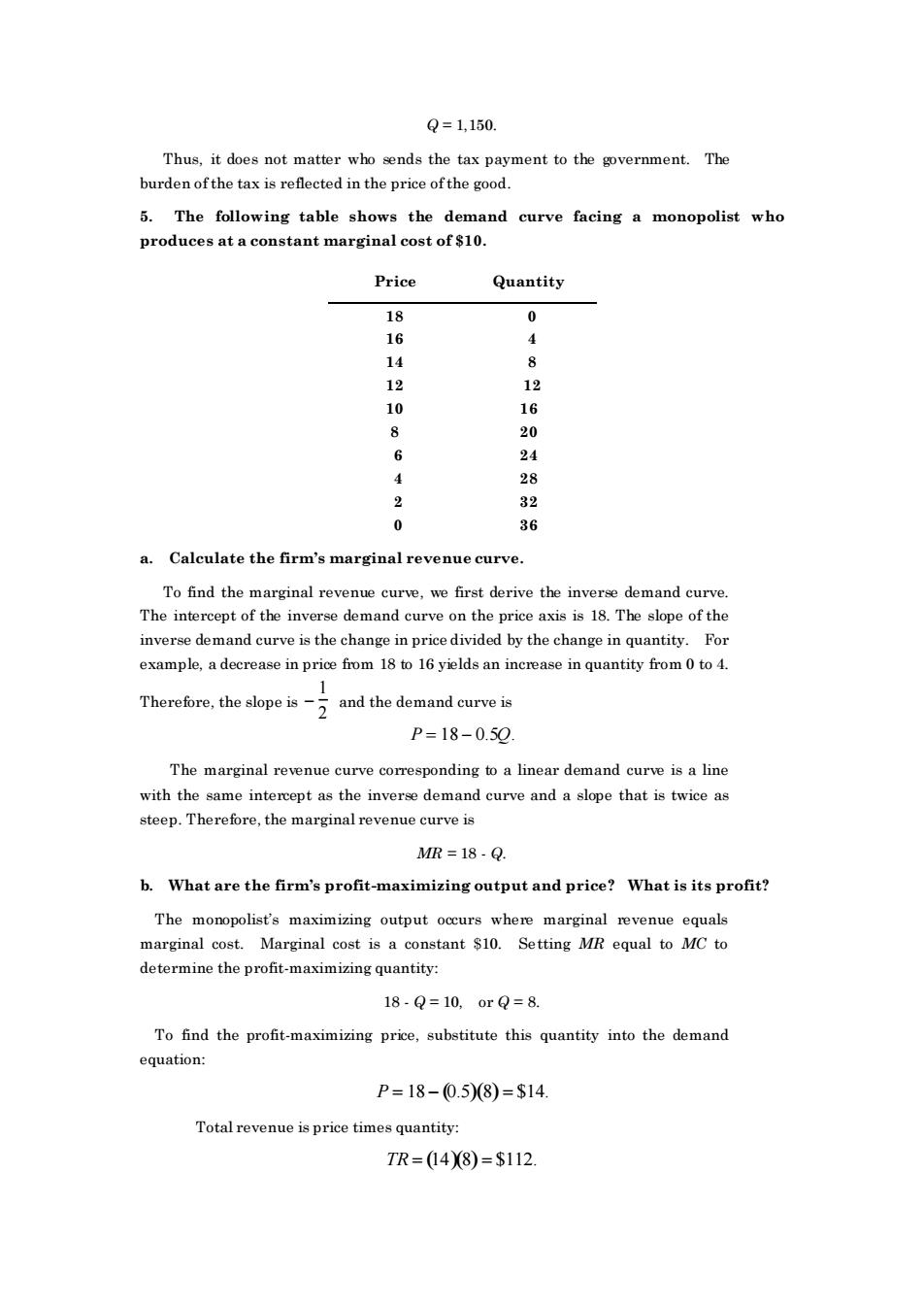正在加载图片...

Q=1,150. Thus,it does not matter who ends the tax payment to the vernment.The burdenofthe tax is reflected in the price ofthe good. 5.The following table shows the demand curve facing a monopolist who produces at a constant marginal cost of $10 Price Quantity 0 16 2 12 10 8 20 6 24 4 28 2 32 0 36 a.Calculate the firm's marginal revenue curve. To find the marginal revenue curw we first derive the inverse demand curve curve the .The of the inverse demand curveisthe change in price divided by the change in quantity Fo example,a decrease in price from 18 to 16 yields an increase in quantity from 0 to 4. Therer the sopeand the demand curveis P=18-0.50 The marginal revenue curve corresponding to a linear demand curve is a line with the same interept as the inverse demand curve and a slope that is twice as steep.Therefore,the marginal revenue curve is MR=18-Q. b.What are the firm's profit-maximizing output and price?What is its profit? The monopolist's maximizing output occurs where marginal revenue equals marginal cost.Marginal cost is a constant $10.Setting MR equal to MC to determine the profit-maximizing quantity: 18-Q=10.orQ=8. To find the profit-maximizing price,substitute this quantity into the demand equation: P=18-0.5)8)=$14. Total revenue is price times quantity: TR=04)8)=S112 Q = 1,150. Thus, it does not matter who sends the tax payment to the government. The burden of the tax is reflected in the price of the good. 5. The following table shows the demand curve facing a monopolist who produces at a constant marginal cost of $10. Price Quantity 18 0 16 4 14 8 12 12 10 16 8 20 6 24 4 28 2 32 0 36 a. Calculate the firm’s marginal revenue curve. To find the marginal revenue curve, we first derive the inverse demand curve. The intercept of the inverse demand curve on the price axis is 18. The slope of the inverse demand curve is the change in price divided by the change in quantity. For example, a decrease in price from 18 to 16 yields an increase in quantity from 0 to 4. Therefore, the slope is − 1 2 and the demand curve is P = 18 − 0.5Q. The marginal revenue curve corresponding to a linear demand curve is a line with the same intercept as the inverse demand curve and a slope that is twice as steep. Therefore, the marginal revenue curve is MR = 18 - Q. b. What are the firm’s profit-maximizing output and price? What is its profit? The monopolist’s maximizing output occurs where marginal revenue equals marginal cost. Marginal cost is a constant $10. Setting MR equal to MC to determine the profit-maximizing quantity: 18 - Q = 10, or Q = 8. To find the profit-maximizing price, substitute this quantity into the demand equation: P = 18− (0.5)(8) = $14. Total revenue is price times quantity: TR = (14)(8) = $112